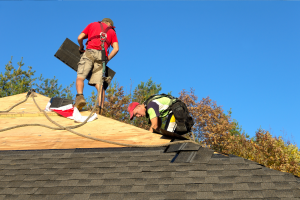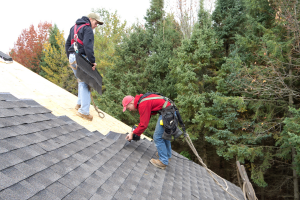Nashville Homes Face Increased Roofing Risks as Temperatures Drop
Temperatures across Nashville are changing quickly, creating early challenges for local roofs.
NASHVILLE, TN, UNITED STATES, November 5, 2025 /EINPresswire.com/ -- Temperatures across Nashville are changing quickly, creating early challenges for local roofs. Warm days followed by cold nights put stress on shingles, flashing, and sealants. Roofing professionals in Middle Tennessee expect more cold-weather wear and tear as the season moves closer to winter.Moisture and rain are adding pressure to both homes and commercial buildings. Mobley Brothers Roofing and Renovation reports that minor issues, such as loose shingles or clogged gutters, often turn into bigger problems when the temperature drops. Nashville’s humid climate and quick weather shifts make older roofs especially vulnerable this time of year.
As the weather cools, roofing experts recommend checking for early signs of damage before winter settles in. The following points outline common risks Nashville roofs may face in the coming weeks.
Temperature Swings Stress Roof Systems
Temperature changes in fall and early winter put extra pressure on roofing materials. Warm days and cold nights cause shingles and metal parts to shift, which can loosen fasteners and open small gaps. This movement often leads to early wear that homeowners may overlook until leaks or drafts appear.
Mobley Brothers Roofing and Renovation has seen a noticeable increase in calls related to cracked seams and shifting panels. Their records show that older shingle roofs move the most when temperatures swing. Regular inspections before colder weather sets in can prevent small issues from turning into costly repairs.
Ice Dams Threaten Roof Integrity
Freezing and thawing weather in early winter creates perfect conditions for ice dams to form. Snow that melts during the day can refreeze at the roof edge overnight, trapping water along the eaves. This trapped moisture can push under shingles and weaken the roof surface over time.
Roofing experts across Nashville warn that ice dams often go unnoticed until leaks appear in spring. Water that seeps beneath the roof can damage insulation and interior ceilings. Regular inspections during temperature swings help protect roof integrity and reduce repair costs later.
Sealant Breakdown Under Cold Stress
Cold weather causes roof sealants to stiffen and lose flexibility as temperatures drop overnight. Surfaces around skylights, vents, and flashing often develop fine cracks that allow moisture to creep in. These small openings can expand rapidly as freezing air and moisture exert pressure against the weakened material.
Field reports from Mobley Brothers Roofing and Renovation indicate that early-season cracking typically occurs before winter arrives. Their technicians have linked lower overnight temperatures to faster sealant failure on residential roofs. Addressing these small issues early helps extend roof life through colder months.
Clogged Gutters Create Overflow Risks
Leaves and small debris often accumulate inside gutters as fall weather transitions into winter. When drainage slows, rainwater and melting ice spill over the sides instead of flowing through the downspouts. This constant overflow can damage roof edges, siding, and the foundation below.
Roofing inspectors across the region point to clogged gutters as a leading cause of seasonal leaks. Blocked systems trap moisture that seeps into materials already stressed by cold temperatures. Clearing gutters before the first hard freeze can help prevent costly water damage during winter storms.
Wind Gusts Expose Vulnerable Roof Sections
Weather outlooks indicate stronger wind patterns developing across Middle Tennessee as December approaches. Sudden gusts can shift shingles and loosen flashing, creating small gaps that invite moisture inside. These weak points often worsen during cold, wet conditions that follow major wind events.
Home exteriors face more stress during long stretches of turbulent weather. Strong gusts can move debris that scrapes surfaces or clogs gutters, putting extra strain on the roof structure. Quick visual checks after storms can reveal early signs of lifting or cracking before serious damage occurs.
Moisture Trapped in Roof Decking
Rain during the fall months can seep into small openings and become trapped inside the roof structure. Mobley Brothers Roofing and Renovation technicians have seen this moisture freeze as temperatures drop, causing the material to swell and separate. Their field data shows that repeated freeze cycles weaken fasteners and reduce the roof’s ability to stay sealed.
Hidden moisture can continue to damage roof decking even without visible leaks. Ice expansion places steady pressure on wood layers, leading to soft spots that worsen over time. Proper ventilation and early-season inspections help prevent this trapped moisture from turning into costly structural problems.
Flashing Failures at Roof Intersections
Cold air settles in quickly during early winter, and metal flashing responds faster to temperature drops than asphalt materials. This uneven movement causes small gaps where water can seep into roof valleys and around chimneys. The separation may start small but often leads to stains or leaks inside the home as the season progresses.
Roof inspectors across the region report that flashing failures are among the hardest issues to spot early. Moisture finds its way beneath the surface long before visible damage appears. Careful checks after sharp temperature changes can reveal early signs of shifting metal before it affects interior spaces.
Condensation Buildup in Attics
Warm air rising through ceilings meets cold roof surfaces in poorly ventilated attics. The temperature difference turns moisture in the air into water droplets that cling to the underside of the roof deck. Mobley Brothers Roofing and Renovation has noticed more attic discoloration and mildew during late fall when this cycle becomes more frequent.
Hidden condensation can damage insulation and weaken roof materials long before major signs appear. Moisture trapped against wood surfaces invites mold growth and structural decay over time. Balanced attic airflow and insulation help limit condensation and protect the roof through the colder months.
Protecting Local Roofs Before Winter Weather Hits Nashville
As colder weather approaches, small issues can quickly turn into costly roof damage across the region. Proactive inspections and minor repairs now can prevent major disruptions later in the season.
Mobley Brothers Roofing and Renovation continues to emphasize the importance of early preparation as the most effective way to protect Nashville roofs before winter arrives. Learn more about their services by visiting mobleybros.com.
David Mobley
Mobley Brothers Roofing & Renovation
+1 (615) 455-3131
email us here
Visit us on social media:
Facebook
Other
Legal Disclaimer:
EIN Presswire provides this news content "as is" without warranty of any kind. We do not accept any responsibility or liability for the accuracy, content, images, videos, licenses, completeness, legality, or reliability of the information contained in this article. If you have any complaints or copyright issues related to this article, kindly contact the author above.



